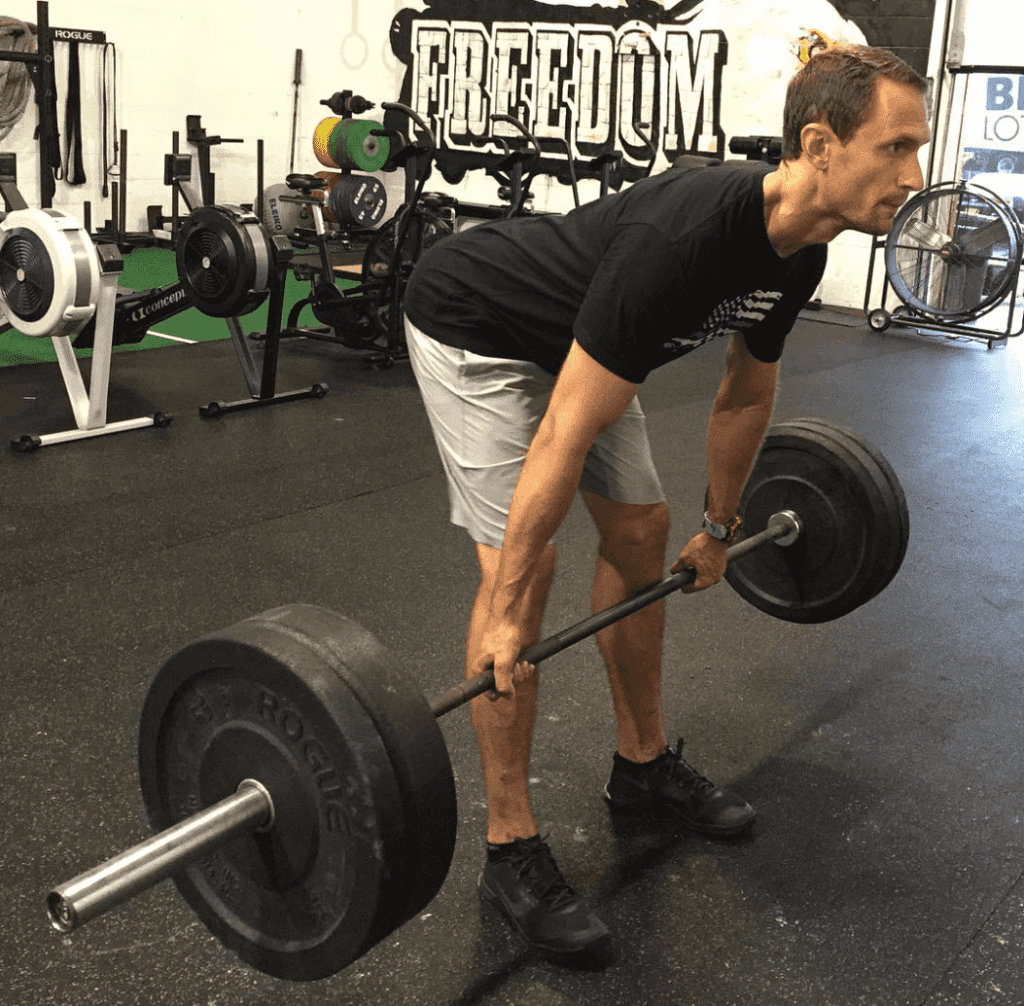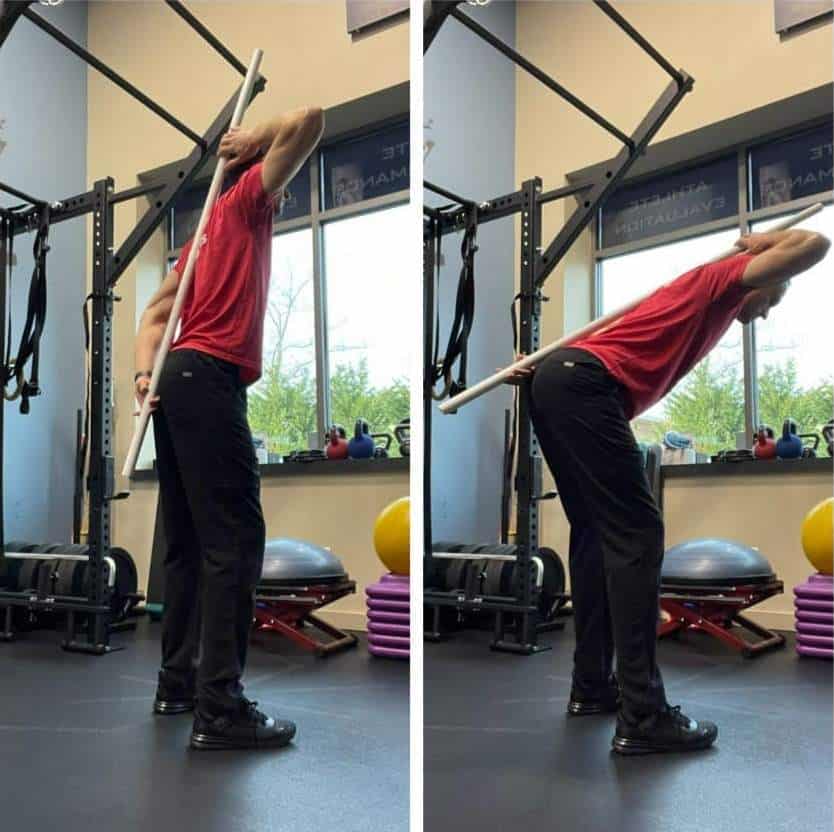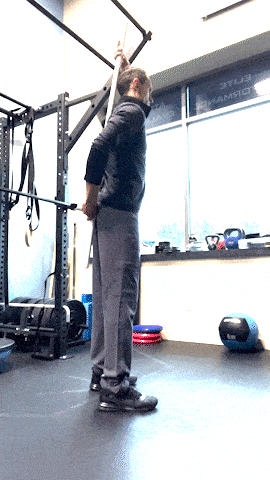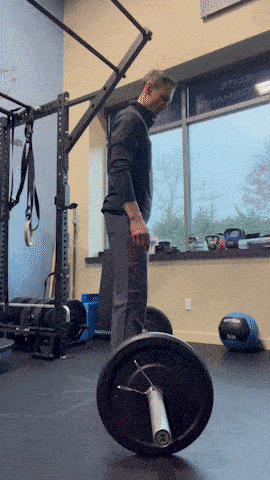One of the most common exercise topics that arises in the office with patients is the deadlift. This topic usually comes up in the form of a comment from the patient, such as “my doctor told me not to deadlift” or “I don’t deadlift because I have a bad back”. These statements irritate me to a great degree. Why, you ask? Because deadlifts are extremely safe for your lumbar spine (low back), help build strength, and are one of the basic functional movements for humans!
What are the benefits of doing Deadlifts?
So why should you deadlift? Well, have you ever had to pick something heavy up from the floor and looked at it and thought “well how am I going to do that?”. This is where the deadlift comes into play. The benefits of doing deadlifts are evidence-based, with several studies supporting its benefits on strength training.
- Deadlifts help you build more strength in key muscles like the quads (thighs), glutes (we all love good looking glutes),
- Deadlifts help develop core strength.
- Improve mobility and stability of the hip.
- Enhance grip strength.
- Give your body more muscular definition.
Types of Deadlifts and Muscles They Work

There are many different types of deadlifts. These include but are not limited to, the conventional deadlift, Romanian deadlift (RDL), single leg RDL, sumo deadlift, hex bar deadlift, kettlebell deadlift, snatch grip deadlift, and a deficit deadlift, just to name a few. The choice to do one versus another might come in the form of strength training programming (ie someone is telling you which one to do), physical limitations (for example if you have poor balance a single leg RDL might not be the best choice), or quite simply you don’t have any equipment other than a kettlebell. In this article, for time and simplicity purposes, I am going to stick to a traditional barbell deadlift from the floor.
Yes, Everyone Should Deadlift, even Grandma
Before we get into how to set up for a deadlift, we should discuss who should be deadlifting. Well, in my personal and professional opinion… EVERYONE! Yes, including Grandma. This is the part where I tell patients about my 81-year-old mother (hi Mom!) and how she not only trains 3 days per week at the gym with a trainer, but she also deadlifts! And I might add, she had lumbar spine fusion surgery in the early 1990s and is still going strong thanks in part to her picking up some weights off the floor.
How do you set up properly for the Deadlift exercise?
Let’s get to the fun part, doing an actual deadlift. Now, it’s not as simple as just loading up a barbell, bending over, and picking it up.
1. Practice the Hip Hinge Movement
First, we must talk about the functional movement that makes a deadlift safe and effective for the lumbar spine, the hip hinge movement. The hip hinge is quite simply bending at the hip joint, as opposed to bending at the spine or performing a squat. In the pictures below, you can see plastic tubing (dowel) is used to cue a neutral spine. By keeping the dowel in contact with 3 points of the body, the head, thoracic spine, and sacrum, we can ensure that we are going through the full hip hinge movement and keeping the spine safe. Going through this motion you will feel a deep stretch in the hamstrings and glutes… this is what you want to feel! The stretch is an eccentric load on these muscles, not a “stretch”. We do not want to feel tightening of the lumbar spine.

Now usually I recommend patients go through hundreds of repetitions of a hip hinge before proceeding to the deadlift, but let’s move this article along (how many are still reading at this point).
Some simple cues for setting up for a deadlift
- Feet flat.
- Keep a slight bend in the knees (we aren’t squatting, we are deadlifting).
- Let your buttocks go backward.
- Keep a close bar path travel (meaning keep the barbell close to your legs, not out in front of you).
With each repetition, you should feel the hamstrings and glutes engage and hopefully burn. If you feel your lower back tighten up or engage, then we must stop and go back to the hip hinge exercise above and practice!


As I said in the last paragraph, usually I recommend patients utilize the hip hinge prior to deadlifting. This helps the brain engrain the proper motor pattern so when we perform a deadlift we are hopefully moving properly and avoid injury. As always, we are happy to answer deadlifting questions or assess your movement pattern. Thanks for reading!


